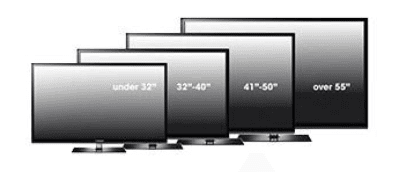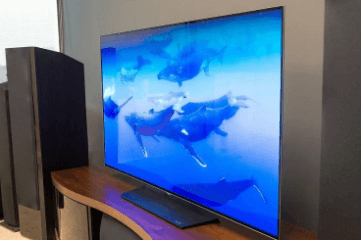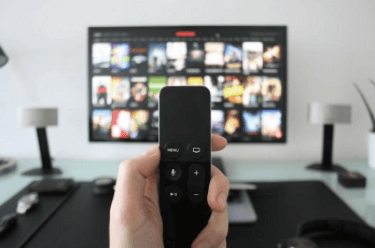It’s tempting to think that the best smart TV will always be the latest, most coveted model on the market today. Maybe, by objective standards, it is; or maybe not. Regardless, the right TV fit for you is going to be, well, all about YOU. The best way to choose the right smart TV is to pick the one that compliments your preferences, desires and standards for home entertainment.
Smart TVs nowadays come with streaming platform-integration, making it easier for anyone to watch shows or movies from Netflix, Hulu, Amazon Prime, and Fox. That, however, isn’t the only feature worth spending your money on. Choosing the best screen for you also means deciding on size, display technology and quality, and screen resolution.
Different TVs can have similar or varied specs. If you don’t exactly know what to look for, don’t worry – we’ve prepared the basics for you below, which should help you find your dream TV.
Weigh Your Options: Know What to Look For in a TV
Size

Smart TVs naturally come in different sizes. If you have a specific size in mind, then you’ll only have to consider the place where you’re planning to put it. Before deciding on a size however, you must also consider your budget. The bigger the TV, the lighter your wallet will become.
Why does size matter? It’s simple – you might regret purchasing a TV too big for your bedroom or, inversely, one too small for your desired viewing experience. If you don’t have a specific size in mind, just make sure the TV fits your space nicely and provides the level of viewing impact you desire — how big do you wanna see the big game, The Bachelor, or the Planet Earth?
If you want to visualize how a size might fit in your room, you can use your measuring tape to jot down the room’s dimensions. If you want to be more specific, you can try creating cardboard panels as surrogates on your walls.
Apart from the size, you should also consider the distance between you (the viewer) and the TV. The larger the screen, the further away you will want to be seated. Although there’s no definitive way of calculating your screen’s ideal size, you can ask for advice from professionals at the local retail store. There you can also canvass and weigh the sizes that work for you.
Resolution

Resolution is the term for a screen’s number of pixels. In the case of flat panels, the more pixels you have, the sharper and better the quality of the display.
If you thought we were done discussing size, think again. When deciding on resolution, the size of the TV is, once again, an important factor. The larger the screen, the more pixels you need. Keeping the resolution count constant, if you then stretch those same number of pixels across a larger screen, you lose clarity and sharpness in the display.
If you’re looking at screen sizes less than 40 inches, then you don’t need to buy a TV that offers 4k resolution (3840 x 2160). 4k is intended for larger size screens. Also take note that some companies refer to 4k as “Ultra HD.”
Display Technology

There are only two display technologies in the market today: LED LCD and OLED.
LED LCD screens are more common – a screen uses LED pixels through an LCD filter to produce an image. This screen type provides more natural lighting and photos that are typically sharper.
OLED screens, on the other hand, skip the backlight by powering each pixel with an electric current. As a result, the display has better contrast and can respond faster to input changes. This type is also a lot more expensive to produce and purchase.
Choosing which one is better is difficult to say, since some manufacturers try to add their own changes, tweaks, or added technologies on top of each type. In fact, some brands like Samsung offer LED LCD screens in purer colors, making them like OLED screens.
Choosing which one is better suited for you all about your preference. A visit to your local retail store to take a closeup look at their differences is recommended.
Software

Smart TVs often provide similar software features, so software will most likely not be your deciding factor. Units from Samsung, Panasonic, TCL, and Sony all grant access to streaming platforms like Netflix, YouTube, Hulu, and many others.
There are still variations – however minor – so if you’re looking for the most extensive app library, you might want to invest in a TCL or Sony set. It may even be better for you to plug in Chromecast, Roku, or Apple TV rather than relying solely on your unit’s built-in software. These external sources will provide you better app choices and will regularly run automatic updates for you.
Instead of thinking too long about the software, check if the TV has numerous ports, allowing you to can connect everything you need. Compatibility wise, if you use tons of Google products, you might be most streamlined across devices with an Android TV.
Picture-Enhancing Features
As you continue to narrow down your TV choices, begin to consider your desire for picture-improving technology.
Some TVs offer high dynamic range, better known as HDR. This feature improves the quality of the picture by lengthening the range of colors and bringing out their darkest and lightest parts. If retailers offer you screens with Dolby vision, choose the one that has HDR support since it will provide better displays.
You should also check out the refresh rate: how often a TV changes the image (also known as a “frame”) on screen per second. The more times the display refreshes, the sharper the image. When you’re out canvassing, don’t be fooled by the terms “effective refresh rates” since these are more likely to be exaggerated.
Extra Purchasing Tips
You may now have a better idea of what to look for in your smart TV. Still, when you’re feeling unsure, follow these tips:
- If you really want the latest model but don’t want to regret buying it, wait a little bit longer until the reviews come out.
- If you want the best price of this year’s most sought-out TV, then wait until the end of the year. That’s when the prices are usually marked down.
- Features 4k resolution and HDR are always worth your money. TVs with 4k resolution are becoming easier to produce, so they are gradually getting cheaper and HDR always delivers better quality.
- It’s your preference! Go to your local store and see what looks best to you.


